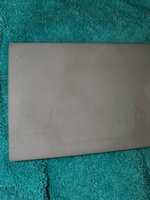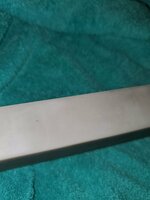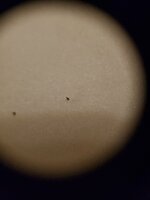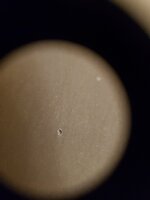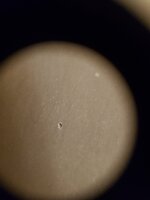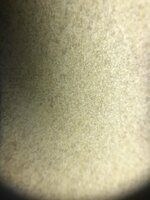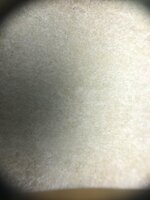Can you elaborate on your pockmarking issue? I may have had something similar happen once.
I'd like to add my theory on the pockmarking you mentioned. Loose grit, as used by the manufacturer and by us, rolls around under the stone and actually flattens it by fracturing out little pockmarks. This is why loose SC can flatten a hone quickly but not finish it smooth. Fixed grit such as W/D sand paper does not roll and finishes the surface through conventional abrasive action. Think how sand paper works on wood. I was once driven to try and remove every little one until I had a perfect surface. Now, if the surface is flat and smooth enough, I just view them as little oil reservoirs.
I’m torn between water or oil on the arks though.
The Black/Trans family can go back and forth between water and oil very easily. Some detergent on the oilstone Ark and it's a water stone. Very versatile in that respect. Softer Arks...your pretty well locked into some sort of oil. I happen to dislike water as a honing fluid. It's a phobia thing, not a performance issue. I do use water on my synthetic bevel setter and whine the whole time, but the results are great! An oil with a water like consistency works best for me on Black/Trans. Choose your flavor. My very favorite thing is WD 40. Try everything and see what you like and what works best for you.
Happy to see more Arkholics in the making!

